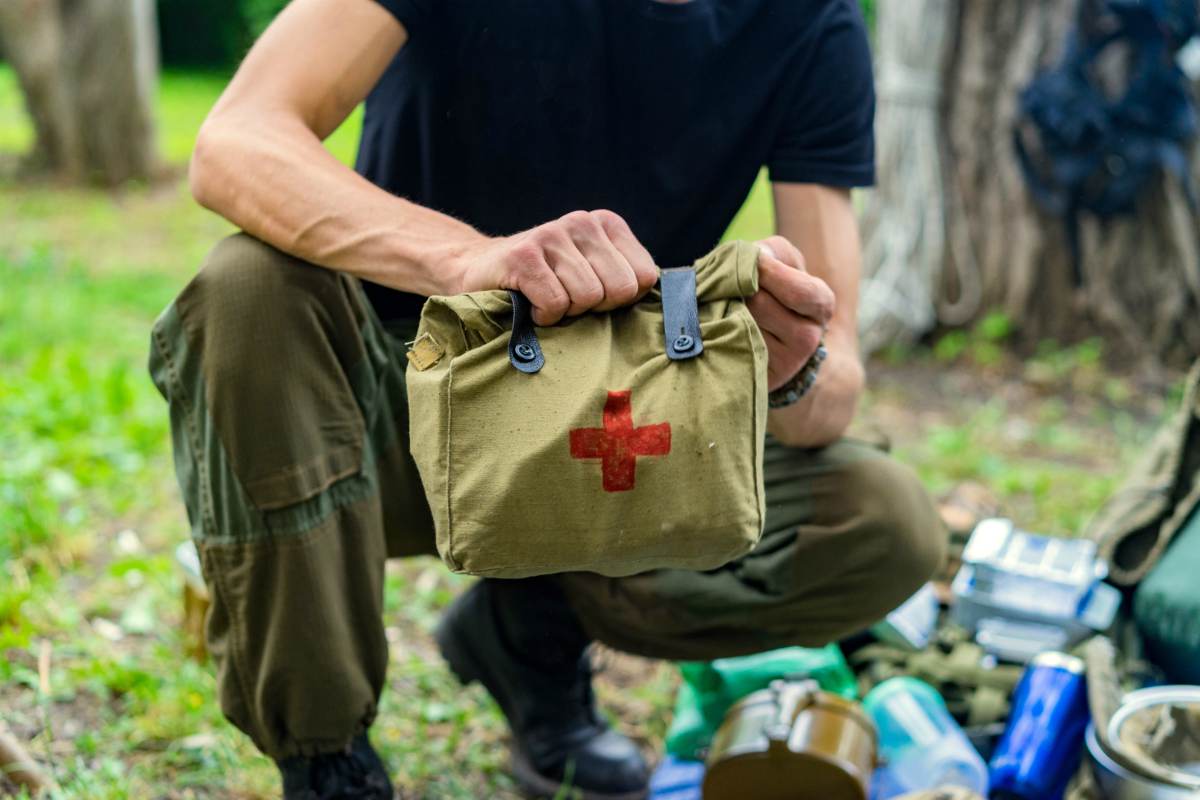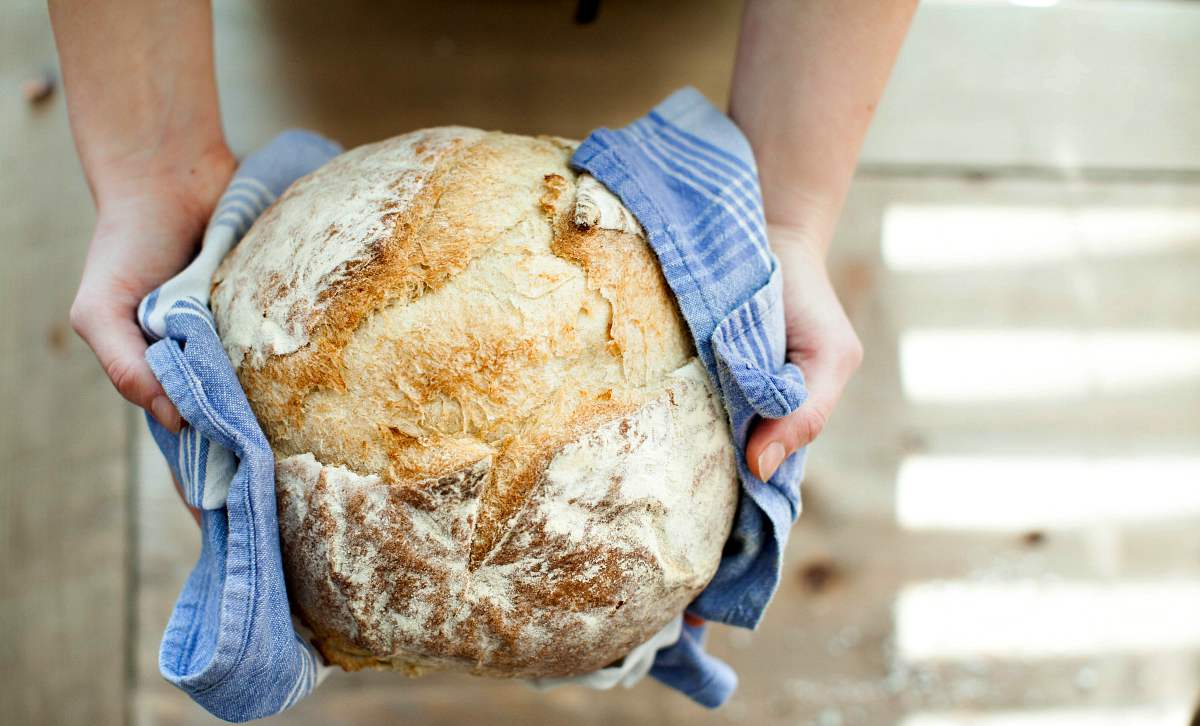Your Road Map To Self Sufficiency Read more on: http://www.totalsurvival.net/
A change into a self-sufficient life can be daunting, but with a little time, effort and hard work, you can work your way to self-sufficiency!
RELATED: 145 Self-Sufficiency Skills Every Prepper Should Learn
In this article:
- How to Get Started
- Mapping a Road to Self-Sufficiency
- 19 Baby Steps Toward a Self Sufficient Lifestyle
- The Final Word
Self Sufficiency 101: Your Guide to Getting Started
How to Get Started
The number one question I am asked by new readers is “where do I start?” This is followed by a meek comment indicating “I have a job and a family and can not afford to move to a farm in the outback.”
Well, first of all, let me say that no apologies are needed. None. Moving to a farm or even to the remote boonies is not for everyone, myself included.
On the other hand, with some time, perseverance and a bit of hard work, we all can take steps to be self-sufficient. And isn’t that what prepping is all about: being self-sufficient so we can take care of our own needs no matter what?
In an idealized world, we would be 100% self-sufficient. Alas, that is unrealistic for most of us and is something that is simply is not going to happen for most of us, desire notwithstanding.
I am just being honest and pragmatic here because honestly, that is the truth, That does not mean that we can not have the ability to get by nicely on our own and satisfy 80% or more of our needs without outside help.
I am just saying that to set a goal of 100% self-sufficiency is defeatist and a goal that is so difficult that giving up is likely.
Mapping a Road to Self-Sufficiency
|
Going back to that idealized world, if everything were perfect, we would have enough food, water, power, fuel, and money to live a well-rounded, healthy and comfortable life.
Hard work would be the norm but at the end of the day, we would have the satisfaction of being able to take care of ourselves without selling out to greedsters or taking a handout from the government.
Alas, everywhere you look there are roadblocks to achieving this state. Not the least of these roadblocks is our dependency on transportation systems and the power infrastructure to deliver goods and energy products to our homes.
We depend on the government and insurance companies to rescue us if there is a natural disaster and we depend on organized medicine to keep us healthy.
The issue with these dependencies, of course, is that they may be unreliable, out of control or so fragile that a strong wind(or hurricane or earthquake) will shut them down, perhaps with dire consequences.
If you are smart enough to recognize this, you will strive for self-sufficiency of one type or another.
Luckily, self-sufficiency is not an all or nothing proposition. At one end of the spectrum is a total, off-grid, agrarian lifestyle and at the other is a moderately self-sufficient living where steps are taken to move toward 20% to 50% self-sufficiency.
19 Baby Steps Toward a Self Sufficient Lifestyle
Today I will share some easy steps you can take to start becoming self-sufficient. These are steps that do not require a farm, do not require acreage and do not require a lot of money.
They are practical steps that you can select from and embrace as your needs and desire for independence evolve over time. Some are easy and others take a bit of skill and practice.
Some can be done for little or no cost and others will require an investment in time, labor, money or all three. The good news is that there are lots of choices and the journey toward self-sufficiency does not have to be done in a day, a month, a year or even a decade.
1. Build up an Emergency Food Supply
|
Stuff happens but you still have to eat. Start by building up a cupboard full of food.
Although my method is a bit unconventional, I endorse filling up a cupboard or pantry with essentials that are hearty enough to fill bellies for a week, a month or longer without regard to the exact number of meals and the precise number of calories.
Trust me, by following the guidelines in 20 Items to Kick Start Your Food Storage Plan, you will have more emergency food than 95% of your friends and neighbors.
2. Learn to Cook Without Electricity or Gas
There are numerous options to cooking on a traditional stove. Build or buy a rocket stove that only requires biomass for fuel.
Learn to use it while cooking a variety of food items. Also, consider a propane stove; just make sure that you also stockpile extra propane tanks.
3. Know How to Build and Start a Fire
Just because you live in the city and have electricity does not mean you will never have to build a fire. Learn how to build a fire and keep it lit for an extended period.
Collect biomass, dryer lint and other materials that can be used as tinder to help get a fire going then practice starting a fire without the benefit of matches or a lighter.
A good resource for learning how to build a fire is Catching Fire: 21 Failsafe Fire-starting Methods.
4. Install an Alternate Fuel Source
You might be surprised by how little power you need to get by. Start with an inexpensive portable generator or some solar panels.
Also think about those items that must have power when the grid is down, such as a well, medical devices, and refrigeration. Take care of providing power to those things and let the rest go for now.
5. Grow a Vegetable Garden
Self-sufficient farming is a great first step to take toward taking care of yourself and some of your food needs. There are some books to help you such as the All New Square Foot Gardening.
Plus you can get tons of help from seed suppliers, Master Gardeners and friendly neighbors that will be glad to give you some regionally appropriate advice.
RELATED: Homesteading And Sustainability: How To Become Self Reliant
6. Start a Compost Pile
Something many gardeners do not think about is that to be successful, they are going to need fertilizer for their crops.
Instead of creating a dependency on the garden center and chemical fertilizers (which also cost money), create your own fertilizer from food scraps and yard waste.
The end result will be a nutrient-rich fertilizer that is not only free but a form of “black gold” for your garden vegetables.
7. Grow Fruit Trees and Berries
Imagine growing hundreds of pounds of fruit each year literally for free and for very little work? This can be done if you take the time, by asking around, to seek out native fruit trees that are natural to your area.
Once established, these trees will not require fertilizer or water (but if you want to feed them some of that compost, they will love it).
8. Learn to Preserve Your Bounty
Canning, freezing, drying and smoking are some of the ways you can preserve your bounty so that you will have it to feed your family during the off-season.
It does take time, yes, but the results in terms of food-saving costs are worth it. As with gardening, once you get the hang of it, preserving your food can be fun as well.
9. Take a First Aid Course and Create a Well-Stocked First Aid Kit

Whether you take a course or not, you will need a well-stocked first aid kit.
In addition, you should have at least one printed medical reference such as The Survival Medicine Handbook or The Merck Manual Home Health Handbook
10. Take Charge of Your Health
Do not wait until you are sick and desperate before learning how to take care of your own health needs.
Study how healing herbs and essential oils can resolve minor first aid and health annoyances (such as scrapes, insect bites, chest congestion due to a cold or the flu) and practice using these methods in daily life.
See Nine Healing Herbs You Can Grow Yourself in a Healing Garden.
11. Acquire Warm Clothing and Blankets to Keep You Warm Without Heat
To me, this seems basic so it always surprises me to learn when folks freak out when there is no heat. Granted, I live in a moderate climate but if there is no heat, the indoor temperature can drop into the 30s.
Down shirts, fleece vests, woolen socks, gloves. comforters and even sleeping bags will keep you warm if not toasty.
The best thing is that most of these items can be found for a reasonable price at thrift stores and second-hand shops. Keep your eyes peeled – especially in winter – and strike a bargain.
12. Learn How to Use Weapons to Hunt and for Personal Projection

When the SHTF, each man (or woman) will be on his or her own to find food and to defend what is theirs. The weapon of choice is really up to you.
Whatever you choose, learn how to use it and be sure to stockpile ammunition (bullets, arrows, ball bearings or whatever).
13. Start an Emergency Fund
It is a fact of life that emergencies happen. I know people who have the means (and high paying jobs) yet still live paycheck to paycheck.
These are the people that scramble when their automobile needs major repairs or a family member gets sick and incurs a large medical bill. Start an emergency fund and pay yourself each week.
Whether you put $5 or $50 a week into the fund, put something in the fund, even if it means you eat beans and rice two nights a week so that you have the money to do so. It's also a wise investment to plan for retirement.
After all, you never know when SHTF. It could be now, or 50 years from now. Either way, you need to be financially prepared.
14. Learn to Barter
Bartering your skills or excess goods is an easy way to become less dependent on others. Need help?
Go back and read 40 Items to Barter in a Post-Collapse World and get yourself a copy of the book “Bartering With Desperate People.”
15. Make Your Own Cleaning Supplies
This is one of my favorites. Most of my own cleaning supplies are of the DIY type.
Get yourself some vinegar, baking soda, castile soap, alcohol, borax, washing soda, and liquid Dawn and you can pretty much clean anything and everything, including your clothes and other laundry items.
Creating your own cleaners will bring out the inner chemist in you, and save you a ton of money.
See Prepper Checklist: DIY Cleaning Supplies for some ideas to get you started. Better yet, see my article in The Preparedness Review which is a free download.
16. Cook from Scratch and Bake Your Own Bread

Cooking tasty meals from the ingredients at hand will set you free of processed foods and unpronounceable food additives.
By cooking from your pantry and your garden, you will save a ton of money and will begin to savor the real taste of various foods and not a taste manufactured in some food producer (or Monsanto’s) lab.
And then there is baking bread. Baking is one of those fun things that will not only save you money but will provide you delicious and wholesome results.
A loaf of homemade bread will cost you 50 cents versus upwards of $4.00 or more at the supermarket. Plus, the basic ingredients of flour, yeast, salt, and water are all things you can pronounce and spell.
No chemicals, no preservatives. See Baking bread and why you should do it and just for kicks The Secret Art of Making Pizza At Home.
17. Be a MacGyver and Fix Your Stuff
Simple plumbing and electrical repairs can easily be learned (or bartered – see above). Painting, deck building, and other handyman activities will save you a ton of money and give you the satisfaction of knowing that you can, indeed, do it yourself.
18. Become Self-Entertaining
Learn to play cards, work crosswords, or become an expert at Scrabble. Learn to dance or play the harmonica. Volunteer as an actor or singer at your local community the theater.
The point here is to become self-entertaining which means being able to relax and enjoy yourself without the computer, the television, the DVD player or other amusements that rely on electronic gizmos.
19. Get to Know Your Neighbors
We are not talking bosom buddies but a friendly hello from time to time. Share your excess bounty or trade something you have for something they need.
There is a reason why borrowing a cup of sugar was so popular in the 50s. The simple exchange of goods fostered trust and feeling of kinship that paid real dividends during times of need.
Need help opening that door? How about a plate of brownies or fresh loads of bread when someone moves in or a pot of soup when someone is ill?
Part of self-sufficiency is knowing who you can trust and who you can call when you need some help. What better time to start than now? See 9 Simple Ways for Preppers to Be a Good Neighbor.
The Final Word
My own experience tells me that there is a special inner peace that comes from being mostly self-sufficient. Not 100%, but mostly.
I have experienced that peace and calm myself when the power went out for an extended period and more recently when we had no phone or internet service for days.
Then there is the joy in doing things that involve my hands and my mind rather than a shopping trip into town. Others that I talk to also tell me that they too find great joy in the simple things in life that do not rely on excessive consumerism.
Take a look at the 19 items on this list. What is your goal? If it is 20% self-sufficiency, pick 3 or 4 and tackle them until you are satisfied you have done the best you can.
After that, pick another item or two and keep going as time, interest and budget allow.
You will find that taking these steps toward self-sufficiency while doing things that you enjoy will help you get closer to an independent lifestyle more quickly than you can imagine. Cows and goats and chickens are not required.
Check out this video from Rent to Grown where a couple talks about their journey into self-sufficiency and sustainability:
This article should give you the push you need to get started on your journey to self-sufficiency.
It isn't an easy path but starting self-sufficiency is always the hardest. But, as soon as you're started, you will find everything falling into place, especially with these ready tips for you.
Up Next:
- 10 Disaster Preparedness Tips You Can Really Use
- Medical Preparedness: Which Should You Store?
- Emergency Preparedness | Is 72 Hours Enough?
For awesome survival gear, you can’t make at home, check out the Survival Life Store!
Follow us on Facebook, Instagram, Twitter, Pinterest, and Tumblr!
**Disclaimer: All content on this site is for informational purposes only. Please read our full disclaimer**
Editor’s Note: This post was originally published on March 3, 2016, and has been updated for quality and relevancy.
This Article Was First Found at survivallife.com Read The Original Article HereOriginal Post Here: Your Road Map To Self Sufficiency

No comments:
Post a Comment